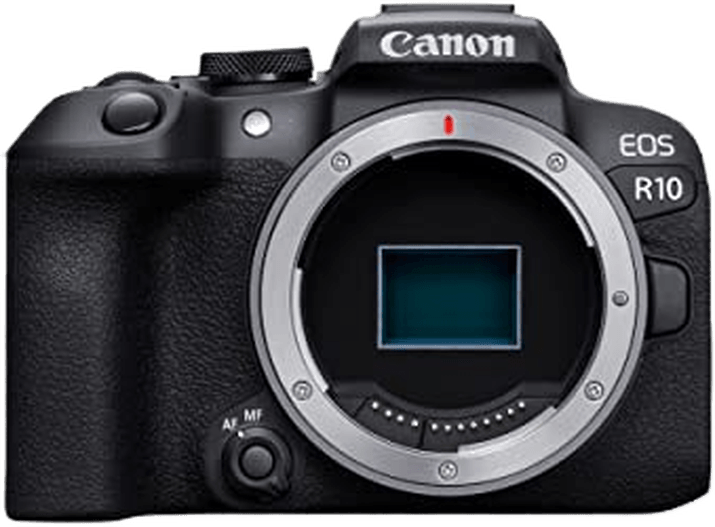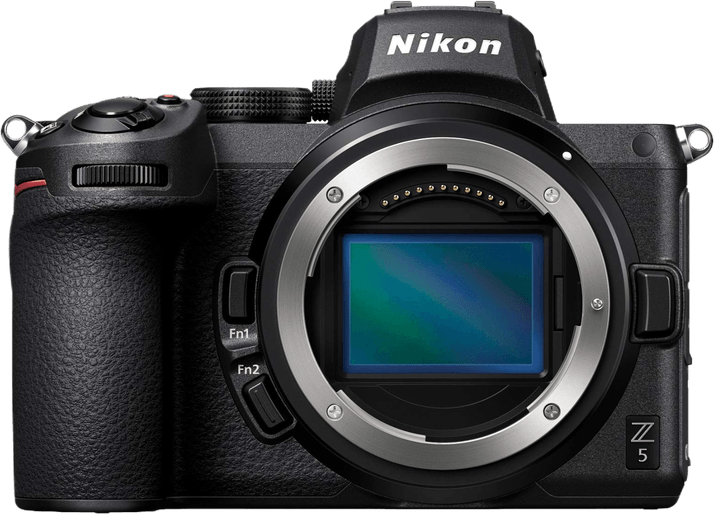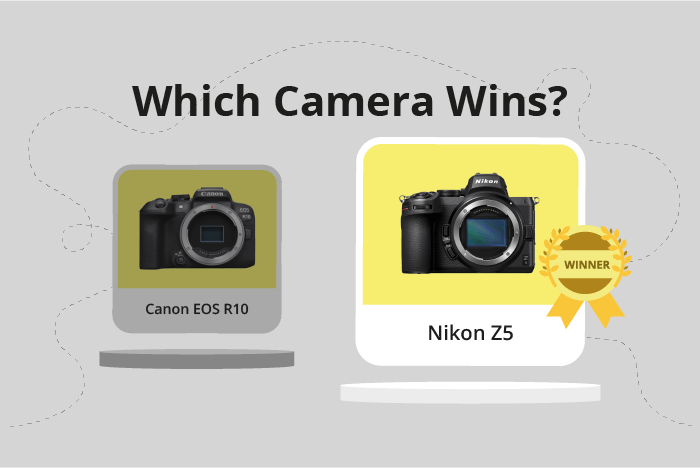Canon EOS R10 vs Nikon Z5 Comparison
Canon EOS R10

Nikon Z5

The Nikon Z5 outshines the Canon EOS R10 with a score of 78/100, compared to the R10’s 69/100. Both cameras are mirrorless and share similarities in their release years, with the Z5 launching in 2020 and the R10 in 2022. Despite their common features, the Nikon Z5 excels with its higher score, making it a better camera.
The Canon EOS R10 has advantages, such as a lower launch price of $980 and a lighter weight of 426g. However, the Nikon Z5 surpasses it with a more substantial build, measuring 134 x 100.5 x 69.5mm and weighing 675g. This gives the Z5 a sturdier feel, which some photographers may prefer.
When comparing the two cameras, the Nikon Z5 stands out as the better option, thanks to its higher score and more robust build. While the Canon EOS R10 offers a more affordable and lightweight choice, the Z5’s superior score and solid construction make it the winner in this comparison.
Canon EOS R10 vs Nikon Z5 Overview and Optics
The Nikon Z5 wins the optics comparison with a score of 81/100, while the Canon EOS R10 scores 71/100. Both cameras have 24 megapixels, CMOS sensors, and a DXOMARK sensor score of 97. They also share the same lens mounts, with the Canon EOS R10 using the Canon RF mount and the Nikon Z5 using the Nikon Z mount.
The Nikon Z5 has some advantages over the Canon EOS R10. It features a full-frame sensor, which provides better image quality, especially in low light conditions. Additionally, the Nikon Z5 has image stabilization, which helps reduce camera shake and improve image sharpness. In contrast, the Canon EOS R10 has an APS-C sensor and lacks image stabilization.
However, the Canon EOS R10 does have a faster shooting speed of 15 frames per second, compared to the Nikon Z5’s 4.5 frames per second. This makes the Canon EOS R10 better suited for action photography and capturing fast-moving subjects.
While both cameras offer high-quality optics, the Nikon Z5’s full-frame sensor and image stabilization give it an edge over the Canon EOS R10. The Canon EOS R10, however, is a better choice for those who prioritize fast shooting speeds. Ultimately, the choice between the two cameras depends on the specific needs of the photographer and their preferred shooting scenarios.
Canon EOS R10 vs Nikon Z5 Video Performance
The Canon EOS R10 outperforms the Nikon Z5 in video capabilities, scoring 91/100 compared to the Nikon Z5’s score of 83/100. Both cameras share common specifications, such as 4K maximum video resolution, 3840 x 2160 video dimensions, and built-in time-lapse functionality. However, the Canon EOS R10 offers superior features that contribute to its higher score.
The Canon EOS R10’s video frame rate reaches a maximum of 120fps, while the Nikon Z5 is limited to 60fps. This difference allows the EOS R10 to capture smoother slow-motion footage and more detailed action scenes. The higher frame rate is a significant advantage for videographers seeking to create dynamic and engaging content.
On the other hand, the Nikon Z5 still delivers quality video performance, despite its lower score. With a 4K resolution, 3840 x 2160 video dimensions, and built-in time-lapse functionality, the Z5 can produce high-quality footage for various applications. However, it lacks the advanced frame rate capabilities of the Canon EOS R10.
Both cameras offer impressive video capabilities, with the Canon EOS R10 taking the lead due to its higher frame rate. The EOS R10 is the better choice for those prioritizing video performance and seeking advanced features. Meanwhile, the Nikon Z5 remains a solid option for users requiring quality video capabilities without the need for the highest frame rates. The choice between the two cameras ultimately depends on the individual’s specific requirements and preferences.
Canon EOS R10 vs Nikon Z5 Features and Benefits
The Nikon Z5 wins the feature comparison battle with a score of 72/100, while the Canon EOS R10 trails closely behind at 70/100. Both cameras share several features, including a touchscreen, flip screen, 1,040,000-dot screen resolution, and the absence of GPS. Additionally, both cameras come equipped with WIFI and Bluetooth capabilities.
The Nikon Z5 has a slightly larger screen size at 3.2 inches, compared to the Canon EOS R10’s 3-inch screen. This difference in screen size provides the Nikon Z5 users with a marginally better viewing experience when composing and reviewing images. This advantage contributes to the Nikon Z5’s higher feature score.
On the other hand, the Canon EOS R10 does not surpass the Nikon Z5 in any specific features. Both cameras have a similar set of features, with the only difference being the screen size. Despite its lower score, the Canon EOS R10 still offers a competitive set of features that cater to the needs of most photographers.
Comparing the Canon EOS R10 and Nikon Z5, it is evident that the Nikon Z5 has a slight edge over the Canon EOS R10 in terms of features, primarily due to its larger screen size. However, both cameras are equipped with essential and modern features that cater to various photography styles and requirements. Ultimately, the choice between these two cameras would depend on the photographer’s specific needs and preferences, with the Nikon Z5 offering a marginally better viewing experience.
Canon EOS R10 vs Nikon Z5 Storage and Battery
The Nikon Z5 outperforms the Canon EOS R10 in storage and battery with a score of 73/100, compared to the R10’s score of 40/100. Both cameras accept SD, SDHC, and SDXC memory cards and offer USB charging. However, the Z5 has an edge over the R10 in several aspects.
The Nikon Z5 has two memory card slots, while the Canon EOS R10 only has one. This provides more storage options and flexibility for the Z5. Additionally, the Z5 supports the faster UHS-II memory cards, enabling quicker file transfers and better performance.
In terms of battery life, the Nikon Z5 lasts slightly longer, providing 470 shots per charge compared to the R10’s 450 shots. The Z5 uses the EN-EL15c battery type, while the R10 uses the LP-E17 battery.
The Canon EOS R10 does not have any apparent advantages over the Nikon Z5 in storage and battery. Therefore, based on these specifications, the Nikon Z5 is the superior choice for users prioritizing storage capacity and battery life.
Canon EOS R10 vs Nikon Z5 – Our Verdict
Are you still undecided about which camera is right for you? Have a look at these popular comparisons that feature the Canon EOS R10 or the Nikon Z5:

